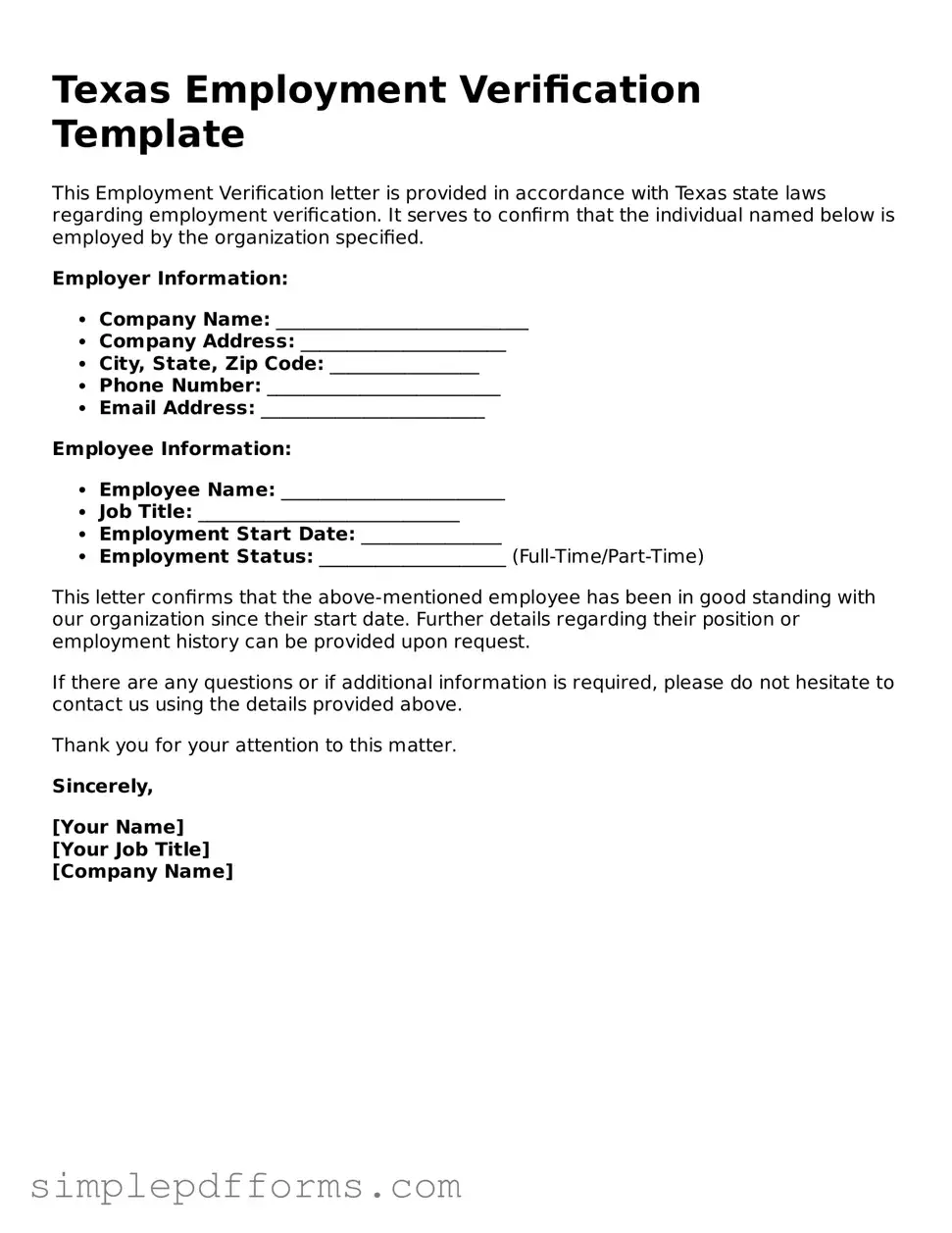Texas Employment Verification Template
This Employment Verification letter is provided in accordance with Texas state laws regarding employment verification. It serves to confirm that the individual named below is employed by the organization specified.
Employer Information:
- Company Name: ___________________________
- Company Address: ______________________
- City, State, Zip Code: ________________
- Phone Number: _________________________
- Email Address: ________________________
Employee Information:
- Employee Name: ________________________
- Job Title: ____________________________
- Employment Start Date: _______________
- Employment Status: ____________________ (Full-Time/Part-Time)
This letter confirms that the above-mentioned employee has been in good standing with our organization since their start date. Further details regarding their position or employment history can be provided upon request.
If there are any questions or if additional information is required, please do not hesitate to contact us using the details provided above.
Thank you for your attention to this matter.
Sincerely,
[Your Name]
[Your Job Title]
[Company Name]
